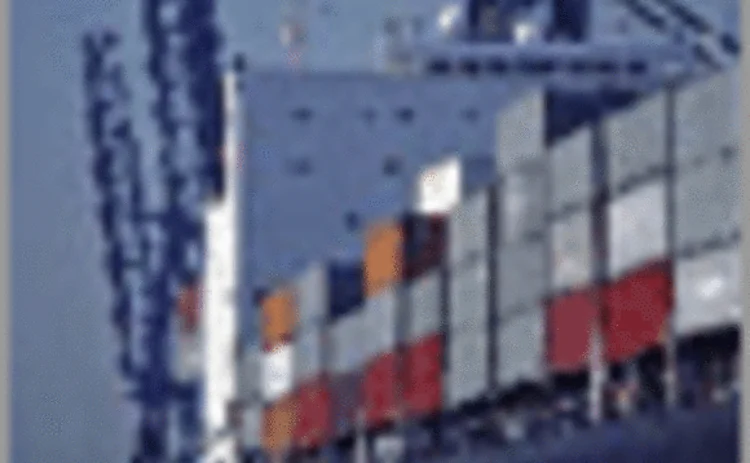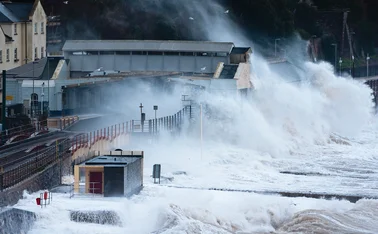
Post Europe: P&I Clubs ride out renewal season

Protection and Indemnity clubs have suffered though period where rate increases were as high as 30%, with this season seeing increases at a high of 10% Edward Murray asks if P&I clubs are riding the perfect storm.
Understandably ship insurers are not keen to talk about the perfect storm, but the protection and indemnity market seems to have both endured and survived one in recent years.
However, after another benign renewal season in February, some are beginning to question when the market will begin to harden again and are examining the factors that will expedite such a move.
Lower end of scale
Comprising 13 international protection and indemnity clubs, the International Group provides insurance for over 90% of the world's merchant fleet. In February, negotiations over general increases started at between 0% and 10%, and in the vast majority of cases settled towards the lower end of that scale.
Aon puts the average general increase recorded for renewals in February 2011 at 3.07%, while figures from Willis show the average general increase recorded for the year before was 4.8%. This is in stark contrast to previous years when increases have been anything up to 30%.
This is in stark contrast to previous years when increases have been anything up to 30%.
Series of issues
These rate rises were driven by a series of issues that put the market under significant pressure. The P&I Clubs suffered in the stock market crash of 2001, and deflated investment returns focused minds on individual underwriting performances.
In the subsequent years, the shipping market went into overdrive with the boom peaking in 2006. This boom saw wages, ship values, and commodity prices all rise dramatically. There were more ships at sea, running to very tight schedules and all of this created a very hot claims environment as Nigel Russell, director, marine at RFIB Group, comments: "When the shipping market was very hot there was a significant increase in claims because the value of cargoes was that much higher."
Spiking years
He also says that ship values were higher, repairs were more expensive, and individual ship earnings were peaking, further inflating the underlying cost of claims.
In 2006 and 2007 spikes of very large claims added to this cauldron of high claims costs and frequency, and led to a number of the P&I Clubs having to make unbudgeted calls to balance their books.
However, just as things looked at their worst, a resurgent investment performance saw the market strengthen its financial position significantly and shore up many of the holes that had begun to appear. As Willis comments in its Protection & Indemnity Market Review 2010/2011: "The most significant factor for the health of clubs' reserves across the market was the resurgence in investment income. In 2008/09 the combined market investment loss approached $840m. In 2009/10 the position reversed with combined investment revenue approaching $680m. Not quite a complete bounce back, but a hugely positive investment result nonetheless."
"When the shipping market was very hot there was a significant increase in claims." Russell
Drop in claims
Alongside this better performance in the investment markets, there has also been a drop off in the number of large claims and while the total value of claims has not actually fallen, the absence of these big individual losses has withdrawn a significant amount of volatility from the market in the short-term.
Making allowance for these major losses is very difficult as their frequency is too low to allow for accurate statistical mapping or forecasting. However, one senior executive at a P&I Club, who wished to remain anonymous, said the levels of smaller attritional claims often gave a better indication of where the market was headed.
Large impact
He said: "If there is a creeping upturn in the rate of attritional claims then that will also have an influence on rates. In terms of volatility the big claims have the largest impact in terms of returns, but in terms of where the market is going then it can be the attritional claims that are more telling."
This presents something of a problem for the P&I Clubs. Despite the shipping market cooling off, many of the costs involved in a claim reducing and there being fewer very large claims, is there are still a growing number of smaller claims being notified.
"The big claims have the largest impact in terms of returns."
Learning from history
This is a point Ben Abraham, executive director of Willis Marine, makes when he says: "The last reported financial year registered the highest level of incurred claims the market has ever seen and so claims are still high. The last time the market was near these sorts of levels was in 2006 and 2007, the difference being that there were enormous spikes in very large pool claims in those two earlier years."
Looking to the future he adds: "Looking down the line, if there is continuing erosion in premium and claims levels continue to rise then that will harden the market again."
This is a point that the P&I Clubs also have in mind and the senior executive felt creeping claims could drive further general increases come next February. He said: "I cannot see any particular reason for claims ameliorating and I suspect the market might start hardening again come the 2012 renewal."
Shipowners should take encouragement from the fact that while underlying claims trends may not be reducing, the subdued shipping market is unlikely to heat up to quite the levels seen in 2006, with all of the associated costs this brought to every claim. As such, rate rises in the immediate future may be necessary, but they are not likely to reach the 30% peaks seen a few years ago.
BOX: Investigation by the European Union into the P&I Clubs
The European Commission is currently carrying out a review of the protection and indemnity insurance industry and as part of this is analysing the activities of the clubs and the International Group.
The Pooling Agreement and the International Group Agreement, have twice previously been reviewed by the European Commission. On both occasions the result was an exemption for the IGA from Europe's competition laws. The most recent exemption expired in 2009. Europe's competition laws remain unchanged, save for the fact that businesses must now make their own assessment of whether an agreement qualifies for exemption rather than rely on a formal exemption from the commission.
Given that the structure of the P&I industry has not altered since the last exemption, the clubs have had no difficulty in making the assessment that the IGA does not contravene EU competition laws. The group and the clubs have received questionnaires from the commission seeking information for the review. A number of shipowners have also received questionnaires and it is expected that more will do so. While this process cannot result in a formal exemption, it will nonetheless be helpful to know that the commission is up to date with the functioning of the group and satisfied as regards its compliance with competition laws.
Source: The Britannia Steam Ship Insurance Association
Only users who have a paid subscription or are part of a corporate subscription are able to print or copy content.
To access these options, along with all other subscription benefits, please contact info@postonline.co.uk or view our subscription options here: http://subscriptions.postonline.co.uk/subscribe
You are currently unable to print this content. Please contact info@postonline.co.uk to find out more.
You are currently unable to copy this content. Please contact info@postonline.co.uk to find out more.
Copyright Infopro Digital Limited. All rights reserved.
You may share this content using our article tools. Printing this content is for the sole use of the Authorised User (named subscriber), as outlined in our terms and conditions - https://www.infopro-insight.com/terms-conditions/insight-subscriptions/
If you would like to purchase additional rights please email info@postonline.co.uk
Copyright Infopro Digital Limited. All rights reserved.
You may share this content using our article tools. Copying this content is for the sole use of the Authorised User (named subscriber), as outlined in our terms and conditions - https://www.infopro-insight.com/terms-conditions/insight-subscriptions/
If you would like to purchase additional rights please email info@postonline.co.uk
Most read
- Esure offers customers six-months free cover for latest tech glitch
- Big Interview: Jason Storah, Aviva
- Copart confirms delays to Luton Airport salvage operation








